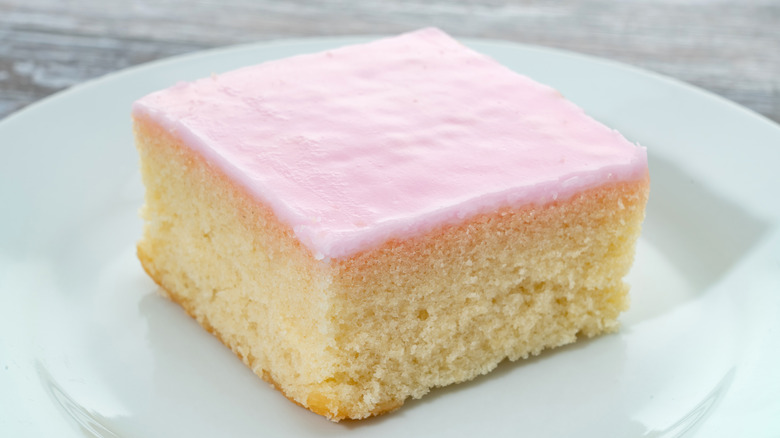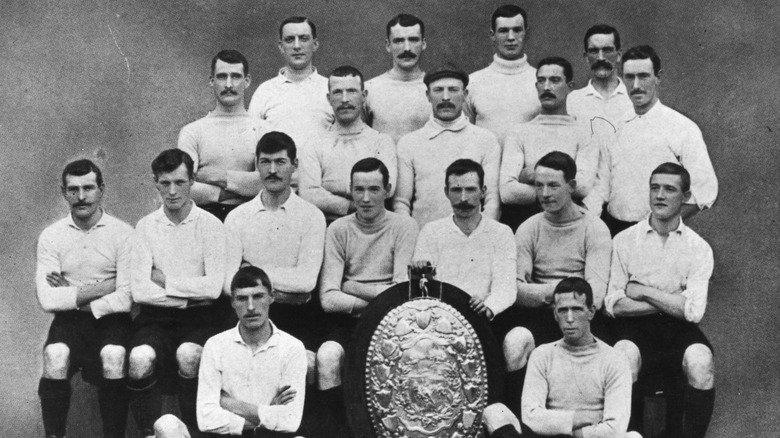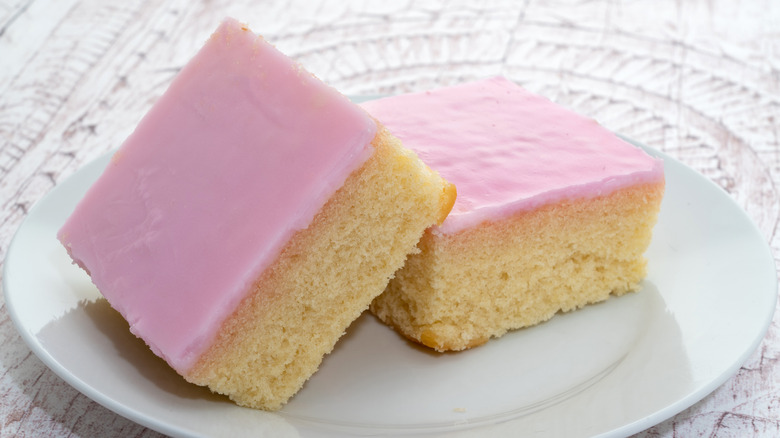The Unique Sporting History Behind The UK's Tottenham Cake
The history of certain foods overlaps with other elements of culture constantly. Different foods have been created to celebrate religious holidays, mark transition points in life, and even found their way into political moments (i.e. Gandhi's salt march, and Marie Antoinette's "Let them eat cake" moment). Sports share their own sizable Venn diagram of culture with food as well.
One lesser-known instance of this is the Tottenham cake. It's a simple sponge cake with pink icing, and either sprinkles or shredded coconut on top. Tottenham cake is widely available in the U.K., and it owes its name and legacy to the North London town of Tottenham, part of what is today the Greater London area.
The cake is forever tied to the successes of the English soccer club Tottenham Hotspur F.C. — colloquially known as Spurs — because it was supposedly given out for free after the team won the prestigious knockout tournament FA Cup back in 1901. This was the first-ever FA Cup win for the small team, and the free cake made that historic victory all the sweeter.
History of Tottenham cake
Tottenham cake was originally created by Quaker Henry Chalkley sometime around the end of the 19th century. Supposedly, the cake was meant to be a nice treat for the area's children while serving as a symbol of traditional Quaker values, specifically simplicity and equality. Chalkley sold slices of the cake for a single penny, and would even sell smaller pieces for a half-penny.
The simplicity of the cake came from its ingredients and baking methods. There were no cake-baking hacks needed because the cake was always baked on a tray. This made it easy to make and produce in mass volumes. It also used inexpensive ingredients to keep costs low and accessible to all.
A recipe for the cake preserved from that time is found in the book "Oats in the North, Wheat from the South: The History of British Baking, Savoury and Sweet" by Regula Ysewijn. It only called for the bare minimum sugar, featured no eggs, and used loads of flour to give the cake its body. Chalkley's other trick was that he sourced his signature ingredient for the cake's pink icing directly from the grounds of the Meeting House of the Tottenham Friends.
Why is it so pink?
Henry Chalkley's "secret" ingredient to Tottenham cake was the mulberries that made its icing so pink and gave the cake most of its flavor. Mulberries are a berry similar to blackberries or raspberries that grow abundantly on trees. Chalkley supposedly picked the mulberries from trees found on the grounds of the Quaker meeting house which still bears some fruit to this day.
This kept the cost of manufacturing the cake low and gave the icing its striking pink color. In turn, it helped to enhance the otherwise plain sponge cake and increase its appeal in the eyes of children. Regula Ysewijn told Atlas Obscura that the icing for a Tottenham cake is typically thinner than others of its kind. That abundant liquid allows it to seep into the topmost layer of the cake and provide more flavor to the cake itself.
There's no doubt that April 27, 1901, was an exciting day for everyone in Tottenham. More so for the children, who would have likely been greeted by the familiar bright pink icing of one of their favorite treats to enjoy free of charge, as they learned of their beloved Spurs' historic victory.


